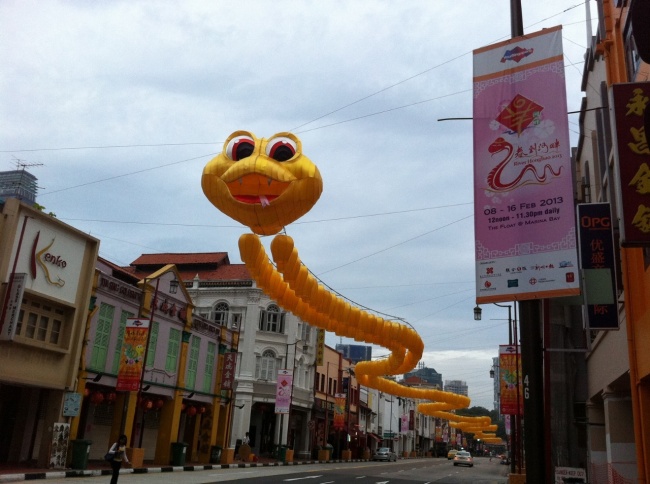Seollal, which falls on Jan. 31 this year, involves a lot of hectic food preparations and family gatherings, but Koreans are not the only people observing it.
Though practices differ, a version of Seollal is celebrated across Asia: millions of Chinese, Vietnamese and Mongolians meet families and friends on the first day of the Lunar New Year.
Here in South Korea, Seollal demands intensive preparations for family gatherings and “charye,” a memorial rite that pays homage to the ancestors of the participants.
Although neighboring cultures do not have a similar memorial rite, Lunar New Year is easily the most popular holiday of all and, nowadays, it is an informal and relaxed occasion for family time and feasting.
Though practices differ, a version of Seollal is celebrated across Asia: millions of Chinese, Vietnamese and Mongolians meet families and friends on the first day of the Lunar New Year.
Here in South Korea, Seollal demands intensive preparations for family gatherings and “charye,” a memorial rite that pays homage to the ancestors of the participants.
Although neighboring cultures do not have a similar memorial rite, Lunar New Year is easily the most popular holiday of all and, nowadays, it is an informal and relaxed occasion for family time and feasting.

Singapore’s top envoy here said he is going to miss out on the fun with his family this year, as he will be in Seoul.
“My dad was the eldest son in his family. Even after he passed away, we still have a kind of open house on Lunar New Year,” said Singaporean Ambassador to South Korea Peter Tan Hai Chuan.
“Traditionally, children offer jujube tea to their parents and grandparents on the first day of Lunar New Year in Singapore.”
Tan is Hokkien, a linguistic Chinese minority. They prepare unique Lunar New Year dishes such as “steamboat” soup, fat choy, sea cucumber and braised duck.
Dugarsuren Bat-Otgon, a staffer at the Mongolian Embassy here, is busy preparing for a festive dinner on Jan. 31. The 30,000-odd Mongolians residing in the country will celebrate the Lunar New Year, which they call Tsagaan Sar, in a big way, too.
They also drink “airag,” a salty cocktail of fermented mare’s milk, but Bat-Otgon said it is not available in South Korea. So, he and his family will substitute Korean makkeolli for airag.
Every Mongolian family prepares hundreds of “buuz,” a traditional dumpling often made with lamb, several days in advance. The Tsagaan Sar table is also decorated with a kind of decorative “cake,” a “Sar Shiniin Ide.”
This special Tsagaan Sar cake consists of an odd number of layers of biscuits ― two layers of happiness and one layer of malevolence ― the whole thing topped with sweets.
In Vietnam, Lunar New Year is called Tet Nguyen Dan, which translates literally as “feast of the first morning of the first day of the year.”
There are customs practiced during Tet that may be familiar to Koreans, such as ancestral worshipping, wishing New Year’s greetings, giving lucky money to children and the elderly and ― like Chinese Singaporeans ― visiting a relative’s house on the first day of the New Year.
The Vietnamese also display a Tet pole, a spiny bamboo tree that a family decorates with origami fish and cacti and red “good luck” paper.
Regardless of the variety of Lunar New Year traditions practiced by Koreans, Chinese, Vietnamese and Mongolians, a common thread runs through all of them: sharing time and a festive meal with family.
“One of the most important traditions of Lunar New Year is the reunion dinners which typically take place. It is a time when families get together and reaffirm ties over dinner,” the Singaporean envoy said.
By Philip Iglauer (ephilip2011@heraldcorp.com)
-
Articles by Korea Herald









![[Kim Seong-kon] Democracy and the future of South Korea](http://res.heraldm.com/phpwas/restmb_idxmake.php?idx=644&simg=/content/image/2024/04/16/20240416050802_0.jpg&u=)








![[KH Explains] Hyundai's full hybrid edge to pay off amid slow transition to pure EVs](http://res.heraldm.com/phpwas/restmb_idxmake.php?idx=652&simg=/content/image/2024/04/18/20240418050645_0.jpg&u=20240418181020)

![[Today’s K-pop] Zico drops snippet of collaboration with Jennie](http://res.heraldm.com/phpwas/restmb_idxmake.php?idx=642&simg=/content/image/2024/04/18/20240418050702_0.jpg&u=)